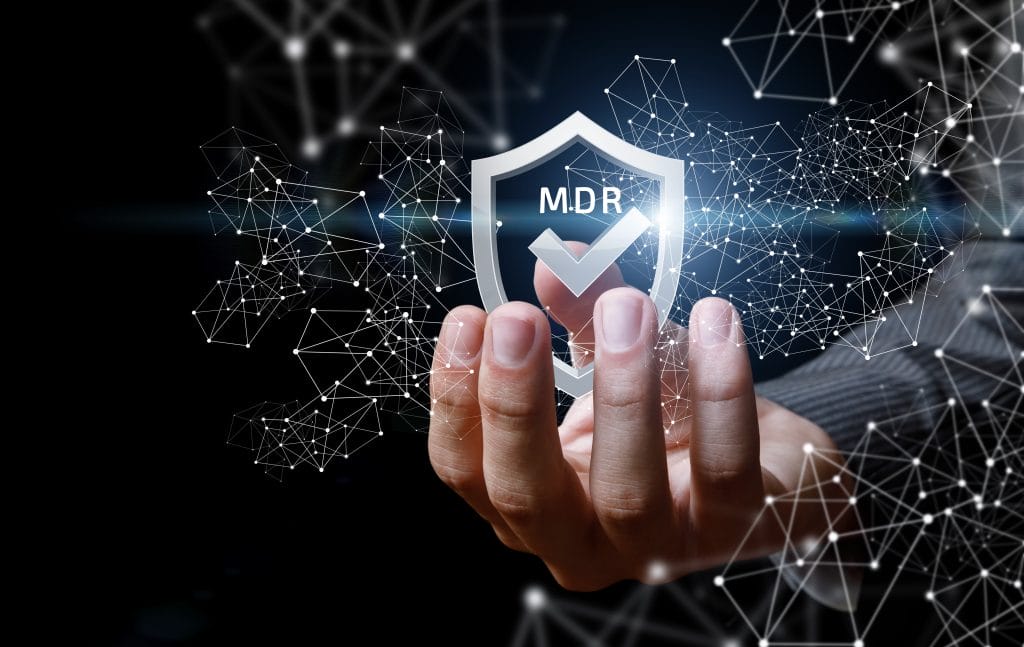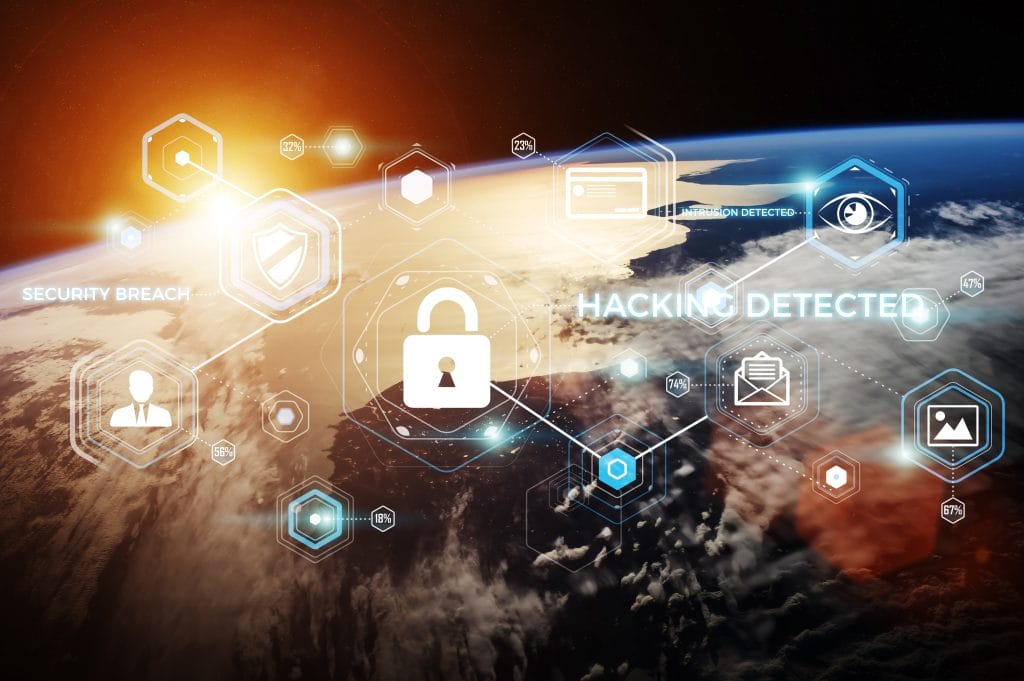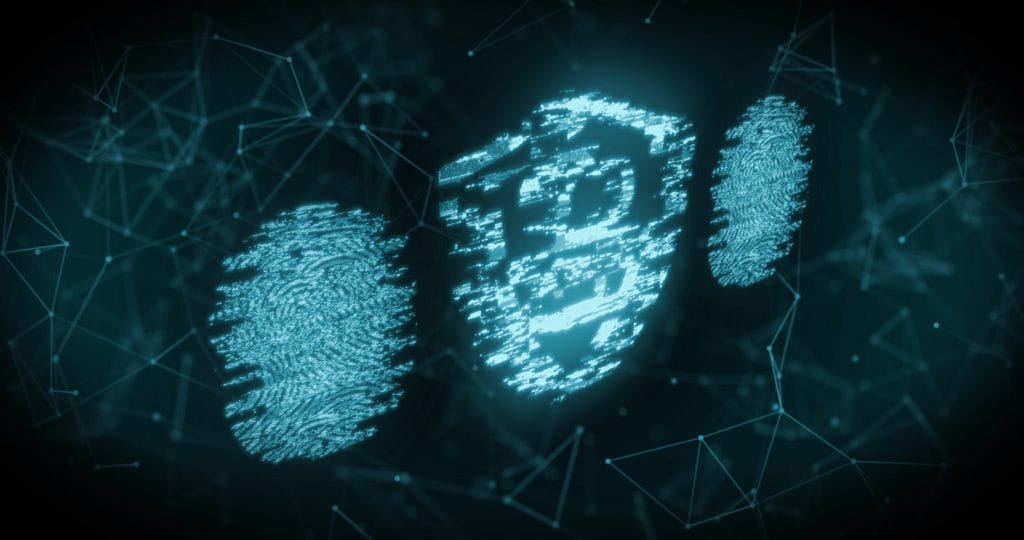
What Is Managed Detection and Response or MDR
Managed Detection and Response (MDR) is an outsourced cybersecurity service that provides advanced threat detection, continuous security monitoring, and rapid incident response. By integrating skilled security professionals with cutting-edge security technologies, MDR enables your organization to identify and respond swiftly to cyber threats, minimizing potential harm and downtime. The service employs proactive threat hunting, advanced analytics, and real-time threat intelligence to make sure constant vigilance, greatly reducing the time it takes to detect threats from months to mere minutes. Leveraging MDR enhances your overall security posture, helping you stay ahead of evolving cyber threats. To grasp the full scope of MDR, consider exploring its extensive advantages and functionalities further.
What Is MDR?
MDR, or Managed Detection and Response, is an outsourced cybersecurity service designed to proactively hunt for and respond to threats within your organization’s network. Unlike traditional security services measures, MDR focuses on advanced threat detection and incident response, ensuring your systems are continuously monitored for potential cyber threats. By partnering with an managed security service providers, you gain access to skilled security professionals who use advanced technologies and analytics to identify and mitigate risks.
Managed detection and response goes beyond basic security operations, providing real-time threat intelligence and rapid incident response. Using mdr services are essential because they help bridge the gap caused by a lack of internal security skills and overwhelming alert volumes. With MDR security services, you don’t just receive alerts; you get prioritized, detailed analyses and recommendations on how to handle detected threats.
The focus on proactive threat detection means that MDR providers are constantly on the lookout for new and evolving cybersecurity threats, ensuring that your defenses are always up to date. By incorporating expert threat hunting and continuous monitoring, MDR enhances your organization’s ability to respond swiftly and effectively to incidents, thereby improving your overall security posture.
MDR Benefits

You’ll benefit from MDR by gaining proactive threat detection that identifies risks before they cause damage, ensuring your network stays secure.
With rapid incident response, threats are neutralized quickly, minimizing potential harm and downtime.
Continuous security monitoring provides round-the-clock vigilance, allowing you to focus on critical tasks while MDR experts handle emerging cyber threats effectively.
Proactive Threat Detection
Proactive danger detection empowers your organization to pinpoint and mitigate risks before they escalate into major security incidents. With MDR, proactive danger detection becomes a cornerstone of your cybersecurity strategy, leveraging managed hunting, advanced analytics, and threat intelligence. This approach guarantees that hidden threats are identified and neutralized swiftly, reducing the time-to-detect from months to mere minutes.
Managed hunting involves continuous monitoring of your network and endpoints for suspicious activities and anomalies. When combined with advanced analytics, it allows your security team to uncover emerging threats and patterns that traditional methods might miss. Threat intelligence further enhances this process by providing real-time insights into the latest adversarial tactics, techniques, and procedures. This all-encompassing threat landscape awareness enables your organization to stay one step ahead of cybercriminals.
Here’s a snapshot of how proactive danger detection benefits your organization:
| Feature | Description | Benefit |
| Proactive Threat Detection | Continuous monitoring to detect anomalies | Early identification of threats |
| Managed Hunting | Active search for hidden threats within the network | Reduced time-to-detect |
| Advanced Analytics | Use of sophisticated tools to analyze data | Detection of complex threats |
| Threat Intelligence | Real-time information on emerging threats | Better preparedness against new attacks |
Rapid Incident Response
Leveraging MDR, you can swiftly identify and contain threats, greatly improving your organization’s security stance and resilience. With rapid incident response capabilities, MDR significantly reduces the time-to-detect from months to mere minutes. This quick identification and containment of threats prevent cyberattacks from escalating into more severe incidents, safeguarding your critical assets and data.
MDR vendors provide services are designed to actively hunt for hidden threats within your network, ensuring that potential vulnerabilities are addressed before they can be exploited. By focusing on rapid incident response, MDR helps minimize the impact of security breaches, allowing your organization to maintain operational continuity. The containment of threats is a vital aspect, as it stops attacks in their tracks, preventing lateral movement and further damage.
Furthermore, MDR enhances your overall security stance by providing detailed insights and analytics, enabling you to understand and mitigate risks more effectively. The ability to respond swiftly to incidents not only protects your organization but also boosts confidence in your cybersecurity measures.
Continuous Security Monitoring
Building on the rapid incident response capabilities, ongoing security monitoring through MDR guarantees your organization stays vigilant 24/7, detecting and responding to threats in real-time. This round-the-clock monitoring secures that potential threats are identified and mitigated before they can cause significant harm, enhancing your overall security posture.
Ongoing security monitoring isn’t just about observation; it involves proactive threat hunting, where skilled analysts actively search for signs of malicious activities within your network. By leveraging advanced threat detection and response techniques, MDR services can quickly identify abnormal behaviors and anomalies that might indicate a breach.
One of the key advantages of MDR’s continuous security monitoring is the drastic reduction in time-to-detect, often bringing it down from months to mere minutes. This rapid detection capability is vital for initiating immediate incident response measures, preventing attackers from establishing a foothold within your systems.
Moreover, MDR provides personalized insights into evolving cyber threats, allowing your organization to adapt its defenses accordingly. With round-the-clock monitoring, you’re not just reacting to threats as they happen; you’re actively strengthening your resilience against future attacks, making sure that your security measures evolve in tandem with the threat landscape.
Business Challenges for MDR
You face significant business challenges when implementing MDR, including the shortage of skilled analysts, which hampers effective threat detection and response.
Additionally, the need for rapid incident response becomes critical as the evolving threat landscape demands constant vigilance and swift action.
These challenges underscore the importance of leveraging MDR services to bridge the expertise gap and enhance your security posture.
Skilled Analyst Shortage
In today’s cybersecurity landscape, the shortage of skilled analysts poses a significant challenge for businesses seeking to maintain robust security postures. With a persistent skilled analyst shortage, companies struggle to fully staff their security teams, leading to gaps in threat detection and response capabilities.
This talent shortage makes it difficult to optimize leading-edge security tools and effectively manage alert fatigue, where overwhelming volumes of alerts can desensitize analysts, reducing their effectiveness in threat remediation.
Managed services provide a security solution by offering external security professionals who bring specialized expertise to the table. These external experts are adept at handling complex security tasks, including alert fatigue management, ensuring that critical threats are identified and addressed promptly.
By leveraging MDR services, organizations can bypass the talent shortage and gain immediate access to a pool of skilled cybersecurity analysts who can enhance their security operations.
MDR providers not only supplement in-house teams but also offer continuous monitoring and advanced threat detection, enabling businesses to maintain a resilient security posture. This approach secures that even with limited internal resources, companies can effectively manage and remediate threats, safeguarding their operations against cyber adversaries.
Rapid Incident Response
Utilizing MDR services, companies can promptly address security incidents, tackling a crucial business obstacle in today’s threat landscape. By using rapid incident response capabilities, MDR significantly reduces the time it takes to detect and neutralize threats, converting what could take months into mere minutes. This efficiency is vital in reducing the impact of security incidents on your organization.
One of the key advantages of MDR is its ability to manage alert fatigue. With numerous alerts generated daily, it’s simple for critical threats to be missed. MDR services employ proactive threat hunting techniques, ensuring that important threats are identified and prioritized for immediate action. This proactive approach not only alleviates alert fatigue but also enhances threat remediation efforts, allowing your security team to concentrate on strategic projects rather than being burdened by false positives.
Moreover, the continuous monitoring and real-time threat intelligence provided by MDR enables your organization to promptly identify and respond to emerging threats. Skilled security analysts work around the clock to guarantee that any security incidents are promptly addressed, minimizing potential damage and upholding your organization’s security posture.
Essentially, MDR offers a holistic solution to the challenges of rapid incident response in today’s intricate threat environment.
Evolving Threat Landscape
As cyber threats become increasingly sophisticated, businesses face notable challenges that MDR services are uniquely equipped to address. The evolving threat landscape demands constant vigilance and an adaptive approach to cybersecurity.
Organizations often struggle with staffing and resource shortages, making it difficult to maintain a robust security posture. MDR services alleviate this burden by providing access to skilled security analysts who can continuously monitor and protect your network.
Alert fatigue is another critical challenge, as the sheer volume of security alerts can overwhelm your in-house team, leading to missed threats. MDR services efficiently manage these alerts, ensuring that only the most critical ones are prioritized and acted upon promptly.
In addition, optimizing security tools can be a complex task, requiring specialized knowledge and ongoing management. MDR providers help you make the most out of your existing security investments, fine-tuning tools to their maximum potential.
One of the most notable advantages of MDR is the reduction in time-to-detect cyber threats. While traditional approaches may take months to identify and respond to threats, MDR services can reduce this timeline to mere minutes, significantly enhancing your overall security posture and allowing your cybersecurity staff to focus on strategic initiatives.
How MDR Works

To understand how MDR works, you need to know that it combines continuous threat monitoring and proactive threat hunting with well-defined incident response strategies. These services guarantee round-the-clock surveillance of your network, utilizing advanced technologies and human expertise to detect and mitigate threats swiftly.
Continuous Threat Monitoring
Continuous threat monitoring in MDR guarantees that your network and endpoints are constantly checked for potential cyber threats. By leveraging advanced threat detection, MDR ensures that every corner of your digital environment is scrutinized for unusual activities. This service combines cutting-edge technology and human expertise to analyze and respond to security incidents in real-time.
Here’s how MDR’s ongoing threat monitoring works:
| Feature | Description |
| Advanced Threat Detection | Uses AI and machine learning to identify anomalies and suspicious activities. |
| Proactive Threat Monitoring | Constantly scans your network to preemptively detect potential threats. |
| Response Capabilities | Provides rapid response to mitigate and neutralize detected threats. |
| Technology and Human Expertise | Combines automated tools with skilled analysts to ensure thorough coverage. |
By employing proactive threat monitoring, MDR services can detect and respond to cyber threats before they escalate into major security incidents. This blend of technology and human expertise allows for sophisticated analysis, ensuring that threats are not only identified but also effectively neutralized.
The continuous monitoring aspect of MDR means that your organization benefits from round-the-clock surveillance, vastly improving your security posture. This approach minimizes the window of opportunity for cybercriminals, making your network more resilient against intrusions.
Proactive Threat Hunting
Proactive threat hunting in MDR actively seeks out cyber threats within your network before they can cause significant harm. By adopting a proactive approach, MDR providers leverage advanced technologies and human expertise to identify and mitigate potential threats. This method goes beyond traditional reactive measures, focusing on real-time detection to stay ahead of evolving cyber threats.
Utilizing advanced technologies, such as machine learning algorithms and behavioral analytics, MDR services continuously monitor your network for any signs of suspicious activity. These technologies analyze vast amounts of data, identifying anomalies that could indicate a cyber attack.
However, technology alone isn’t enough. Human expertise plays a vital role in proactive threat hunting. Skilled security analysts interpret the data, understand the context, and make informed decisions about potential threats. They can distinguish between false positives and real threats, ensuring that only genuine risks are addressed.
Proactive threat hunting enhances your security posture by identifying and neutralizing threats before they escalate. This proactive approach guarantees that your organization can respond swiftly and effectively to potential security incidents, reducing the impact of cyber threats.
Incident Response Strategies
MDR’s incident response strategies often leverage advanced data analytics, machine learning, and skilled human investigation to validate and address security alerts efficiently. By utilizing these sophisticated methods, MDR providers can quickly identify and prioritize threats, ensuring that your organization’s vital assets remain protected.
The alert triage process is a pivotal component, allowing security teams to focus on the most urgent and high-risk events first, thereby optimizing their response efforts. Human investigation plays a significant role in these strategies, as experienced security professionals thoroughly analyze incidents to determine their severity and potential impact. This detailed examination helps in devising appropriate remediation steps to mitigate any damage swiftly.
Additionally, MDR’s proactive threat hunting involves actively searching for hidden or ongoing attacks within your network, enabling the early detection and neutralization of threats before they can cause significant harm. The integration of data analytics and machine learning not only enhances the accuracy of threat detection but also improves the efficiency of the overall incident response process.
MDR Vs. Extended Detection and Response
When comparing MDR and EDR, you’ll notice substantial differences in their threat detection approaches, response capabilities, and resource allocation.
While EDR is focused on identifying and addressing threats at the endpoint level, MDR provides a more inclusive strategy by incorporating human expertise and advanced threat intelligence for proactive threat hunting and swift response.
This holistic approach allows MDR to markedly reduce the time-to-detect, ensuring a more robust and timely defense against cyber threats.
Threat Detection Approach
In comparing threat detection approaches, MDR integrates advanced technology with expert analysis, while EDR centers exclusively on monitoring and responding to endpoint activities.
MDR leverages a combination of technology and human expertise to provide thorough threat detection. This approach encompasses proactive threat hunting, which ensures that potential threats are identified and mitigated before they can cause significant harm.
In contrast, EDR focuses primarily on endpoint activities, offering real-time monitoring and response capabilities for specific devices within a network.
MDR services enhance traditional EDR capabilities by incorporating broader security measures and reducing the time-to-detect from months to minutes. This means you’re not just relying on automated systems; instead, you benefit from a collaborative approach where skilled analysts continuously monitor your network.
Here are some key differences between MDR and EDR regarding threat detection:
- MDR includes threat detection, response, and hunting.
- EDR focuses solely on endpoint detection and response.
- MDR combines technology and human expertise.
- MDR offers proactive threat hunting and monitoring.
- EDR is a component of the broader MDR service.
Response Capabilities
Comparing response capabilities, you’ll find that MDR offers a holistic approach, extending beyond the endpoint-focused strategies of EDR. While EDR zeroes in on endpoint detection and response, MDR encompasses a broader scope, integrating threat hunting, incident response, and the application of human expertise. These additional layers of security make MDR a more all-encompassing solution.
MDR leverages threat intelligence to proactively hunt for threats across your entire network, not just the endpoints. This proactive threat hunting involves identifying and mitigating threats before they can cause significant damage. In contrast, EDR primarily monitors endpoint activities, reacting to threats that have already penetrated the system.
Incident response under MDR is robust, combining automated processes with expert human intervention. This blend ensures that responses to incidents aren’t only swift but also tailored to the specific threat landscape of your organization.
The human expertise involved in MDR adds a strategic layer of analysis, interpreting intricate threat data and providing actionable insights.
Resource Allocation
By integrating human skills with advanced technology, MDR optimizes resource allocation, freeing up your security team to tackle more strategic initiatives.
While Endpoint Detection and Response (EDR) focuses primarily on endpoint visibility and response, MDR expands its scope to include extensive threat management. This approach not only enhances resource allocation but also ensures an efficient response to potential threats.
MDR combines technology with human intelligence, reducing the time spent on manual threat detection and response. This allows your security team to focus on more critical tasks, such as strategic projects that drive business goals forward.
Here’s how MDR can improve resource allocation:
- Human Expertise: Leveraging skilled security analysts to interpret data and respond to threats.
- Efficient Response: Quickly addressing incidents, minimizing downtime and operational disruptions.
- Threat Management: Proactively managing and mitigating risks before they escalate.
- Reduced Burden: Decreasing the workload on your in-house team, allowing them to concentrate on high-value activities.
- Extensive Coverage: Offering a broader security posture than EDR, covering more aspects of your network.
MDR Vs. MSSP
When comparing MDR to MSSP, you’ll notice that MDR takes a proactive approach by actively hunting for threats, offering real-time incident response, and providing advanced threat intelligence.
MSSPs, on the other hand, primarily focus on managing and monitoring firewalls and infrastructure, reacting to vulnerabilities as they arise.
This fundamental distinction guarantees that MDR offers a higher level of security through continuous monitoring and immediate action against potential threats.
Proactive Threat Hunting
While traditional MSSPs focus on managing security infrastructure, MDR takes a proactive approach by actively hunting for threats before they cause harm. This proactive threat hunting involves advanced threat research and leveraging the expertise of experienced threat detection professionals. By continuously analyzing threat intelligence, MDR services can detect unknown threats that might otherwise slip through the cracks, providing a more robust defense for your organization.
Unlike MSSPs, which tend to react to incidents after they occur, MDR’s proactive stance means you can identify and neutralize threats early. This proactive method is vital in today’s cybersecurity landscape, where new threats emerge daily, and adversaries constantly evolve their tactics.
Here’s how MDR stands out with proactive threat hunting:
- Advanced threat research: MDR providers conduct ongoing research to stay ahead of emerging threats.
- Experienced threat detection professionals: Access to skilled analysts who specialize in identifying and mitigating threats.
- Comprehensive threat intelligence: Utilization of detailed data to understand and anticipate potential attacks.
- Detection of unknown threats: Identifying threats that traditional security measures might miss.
- Continuous monitoring: Ensuring threats are identified and addressed in real-time.
Real-Time Incident Response
Building on the proactive threat hunting capabilities of MDR, let’s explore how it delivers immediate incident response compared to traditional MSSPs.
While MSSPs typically focus on managing your security infrastructure and monitoring alerts, MDR takes a more dynamic approach. MDR emphasizes proactive threat hunting and rapid detection, guaranteeing threats are identified and neutralized swiftly.
When a potential threat is detected, MDR provides immediate incident management, leveraging the expertise of experienced threat detection experts. These experts don’t just monitor; they actively engage in identifying and mitigating threats as they arise, ensuring minimal disruption to your operations.
In contrast, MSSPs may lack the detailed threat intelligence and proactive response capabilities necessary for immediate incident response. They often operate reactively, addressing alerts after they’ve occurred rather than preventing incidents in the first place.
MDR’s immediate incident response is a game-changer for organizations seeking robust cybersecurity measures. With a focus on rapid incident response and proactive threat hunting, MDR guarantees that you’re not just reacting to threats but staying ahead of them.
This proactive approach makes MDR a preferred choice for organizations needing immediate cybersecurity protection.
Advanced Threat Intelligence
MDR excels in providing advanced threat intelligence by proactively searching and analyzing sophisticated threats, unlike MSSPs which mainly focus on managing security infrastructure. When you choose the right MDR, you’re not just getting a service that monitors your network; you’re gaining access to a team of skilled security analysts who perform thorough analysis and proactive threat hunting to identify and mitigate risks before they become critical issues.
MDR services offer:
- Advanced threat intelligence to keep you informed about the latest cyber threats.
- Proactive threat hunting to identify and address potential vulnerabilities before they’re exploited.
- Thorough analysis of network activities to uncover complex threats that might evade traditional security measures.
- Threat research that continuously updates defenses based on evolving adversarial tactics.
- Skilled security analysts who provide detailed threat investigations and tailored responses.
While MSSPs typically handle perimeter security and manage existing infrastructure, MDR delves deeper into your internal network activities, focusing on identifying and responding to advanced threats. This proactive approach guarantees that your organization is always one step ahead of cyber adversaries, providing peace of mind and robust protection against potential breaches.
Choosing an MDR Service

Choosing an MDR Service
Selecting the right MDR service can greatly strengthen your organization’s cybersecurity position by providing continuous monitoring and rapid response to threats. When choosing an MDR service provider, prioritize those offering quick incident response and full network visibility. This guarantees that any threats are identified and addressed promptly, reducing potential damage.
An efficient MDR service should also have a fast onboarding process, allowing for seamless integration into your existing security framework without causing disruptions.
Additionally, look for cyber security providers that specialize in proactive prevention, not just detection and response. This means they should be able to anticipate potential threats and take measures to prevent them before they occur. Confirm that the MDR provider has a 24/7 Security Operations Center (SOC) with a team of skilled analysts who can monitor your network around the clock.
Verify the expertise of the MDR service in securing various platforms, including cloud environments and enterprise endpoint devices. Robust data analytics capabilities are also essential, as they enable the identification of sophisticated threats through detailed analysis of network traffic patterns and user behavior.
Impact on Cybersecurity Strategies
Incorporating Managed Detection and Response into your cybersecurity strategy greatly enhances your defenses by leveraging real-time threat intelligence, which keeps you informed of emerging threats.
Proactive threat hunting identifies potential vulnerabilities before they can be exploited, ensuring a robust security posture.
Additionally, rapid incident response minimizes damage by swiftly addressing security breaches, allowing your organization to recover quickly and maintain operational continuity.
Real-Time Threat Intelligence
Real-time threat intelligence transforms cybersecurity strategies by equipping organizations with the latest insights to thwart emerging threats before they cause harm. This proactive approach allows you to identify and mitigate security risks, ensuring that your defenses are always one step ahead of cybercriminals.
Leveraging real-time threat intelligence means you can respond immediately to new threats, reducing the window of vulnerability and maintaining a dynamic security posture.
By integrating real-time threat intelligence into your cybersecurity strategy, you can:
- Enhance proactive identification of potential threats and vulnerabilities.
- Mitigate security risks before they escalate into notable incidents.
- Enable immediate response to emerging threats, minimizing potential damage.
- Stay updated with the latest threat trends and adversarial tactics.
- Maintain a dynamic security posture that adapts to evolving threats.
These benefits collectively strengthen your organization’s ability to fend off cyberattacks, ensuring that your sensitive data and systems remain secure.
Proactive Threat Hunting
Building on the advantages of real-time threat intelligence, proactive threat hunting actively searches for ongoing attacks to further bolster your cybersecurity strategy. By continuously hunting for threats, MDR services help you identify and mitigate potential issues before they escalate into substantial security breaches. This proactive stance is essential for modern cybersecurity strategies, guaranteeing that your defenses are always one step ahead of cyber adversaries.
Proactive threat hunting notably improves incident response times by detecting threats early, allowing swift action to be taken. This reduces the potential damage to your organization and minimizes the impact of security breaches. Integrating this approach into your cybersecurity strategy means that threats are identified and addressed more quickly, maintaining the integrity and security of your systems.
Here’s a comparison to highlight the benefits of proactive threat hunting in MDR:
| Aspect | Traditional MSSPs | MDR with Proactive Threat Hunting |
| Threat Detection | Reactive | Proactive |
| Incident Response Times | Slower | Faster |
| Impact on Security Breaches | Higher | Lower |
Incorporating proactive threat hunting into your cybersecurity strategy ensures a robust defense mechanism, continuously adapting to evolving threats and maintaining a secure environment. This forward-thinking approach not only enhances your security posture but also notably reduces the risks associated with cyber threats.
Rapid Incident Response
Swift incident response significantly boosts your cybersecurity strategy by reducing the time-to-detect threats from months to mere minutes. Leveraging an MDR service offers rapid incident response, which is crucial in minimizing the impact of threats and fortifying your security stance. With proactive threat monitoring, MDR guarantees that potential threats are identified swiftly, allowing for immediate action.
Efficiency in incident response isn’t just about speed but also about the effectiveness of the actions taken. MDR services deploy advanced analytics and skilled security analysts to manage threats, guaranteeing that your organization can mitigate risks promptly and effectively. This rapid response capability reduces downtime and limits potential damage.
Here’s how rapid incident response through MDR benefits your cybersecurity strategy:
- Minimized Impact of Threats: Quick detection and response reduce the harm caused by cyber threats.
- Proactive Threat Monitoring: Continuous monitoring detects threats before they can cause significant damage.
- Enhanced Security Posture: Swift responses contribute to a more resilient and robust security framework.
- Resource Optimization: Allows IT staff to concentrate on strategic initiatives rather than combating threats.
- Comprehensive Threat Analytics: Real-time analytics offer deeper insights into the nature of threats, enhancing future defenses.
Incorporating rapid incident response as part of your cybersecurity strategy through an MDR service guarantees that your organization remains resilient against evolving cyber threats.
Frequently Asked Questions
What Is Managed Detection and Response Mdr?
You rely on MDR to proactively detect and respond to cyber threats. It provides continuous monitoring, real-time threat intelligence, and rapid incident response, helping you enhance your organization’s security posture and stay ahead of attackers.
What Is MDR in Simple Terms?
You’re asking about MDR. It’s a cybersecurity service where experts monitor your network 24/7, detect threats quickly, and respond immediately. It’s like having a vigilant security team always ready to protect your digital assets.
Is Managed Detection and Response the Same as EDR?
No, managed detection and response (MDR) isn’t the same as endpoint detection and response (EDR). While EDR focuses on endpoint security, MDR provides broader threat detection, proactive monitoring, and advanced incident response, integrating human expertise and threat intelligence.
What Is MDR Used For?
You use MDR to rapidly identify and respond to cyber threats, reducing detection time from months to minutes. It enhances your security posture with proactive threat hunting, incident response, and 24/7 monitoring, minimizing impact from hidden threats.
Conclusion
By adopting Managed Detection and Response (MDR), you can greatly enhance your organization’s cybersecurity posture. With its mix of real-time threat detection, continuous monitoring, and swift incident response, MDR empowers you to proactively defend against evolving cyber threats. This proactive approach, supported by advanced threat research and skilled security analysts, guarantees your digital assets remain secure.
In an ever-changing digital landscape, MDR transforms your cybersecurity strategy from reactive to proactive, providing the peace of mind essential for traversing today’s intricate cyber environment. Computronix Managed IT can help you implement MDR solutions tailored to your specific needs, ensuring that your business stays ahead of cyber threats while you focus on what you do best.










